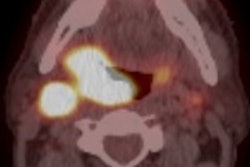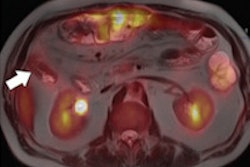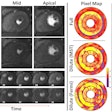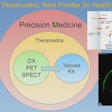Dear Molecular Imaging Insider,
Multiple studies have shown the feasibility of PET/MRI for a variety of oncology applications, but to what degree will the hybrid modality be used routinely in the clinical imaging environment?
Researchers from the University of California, Los Angeles (UCLA) delved into that question with a comprehensive review of published literature covering a dozen different cancer types and more than 2,300 patients. They found that while PET/MRI can be most beneficial for prostate cancer and bone metastases, it falls short in lung nodule assessments. There are also other challenges, not the least of which is the tried-and-true clinical performance of PET/CT.
Read more about how PET/MRI fits into today's clinical practice in our Insider Exclusive.
Speaking of PET/CT and cancer, a three-month follow-up scan is very helpful for detecting the recurrence of oropharyngeal cancer and predicting the overall survival of patients treated with radiation therapy, according to researchers from H. Lee Moffitt Cancer Center in Tampa, FL. Their study found that the combination of PET/CT and a physical exam identified a great majority of cancer recurrences and contributed to better three-year overall patient survival rates.
Multiple PET scans to evaluate post-treatment recurrence of lung and esophageal cancer, however, do not lead to better two-year patient survival rates, concluded researchers from the University of Michigan. Their findings suggest that the modality may very well be overused for this clinical application.
Meanwhile, the combination of FDG-PET and MR enterography can accurately differentiate fibrotic strictures and inflammation in patients with Crohn's disease. By doing so, these patients can avoid unnecessary surgery and be better treated using noninvasive therapy options.
Looking ahead, Japanese researchers are reporting early success with a novel PET imaging tracer that enhances the detection of tau deposits in regions of the brain that are associated with the onset of cognitive impairment and Alzheimer's disease. The tracer, known as F-18 THK5351, demonstrated a greater ability to selectively bind to tau accumulations in certain brain regions that are prime targets for neurodegeneration and dementia.
As always, visit the Molecular Imaging Community as part of your daily routine to stay informed on the latest news and research from around the world.




















